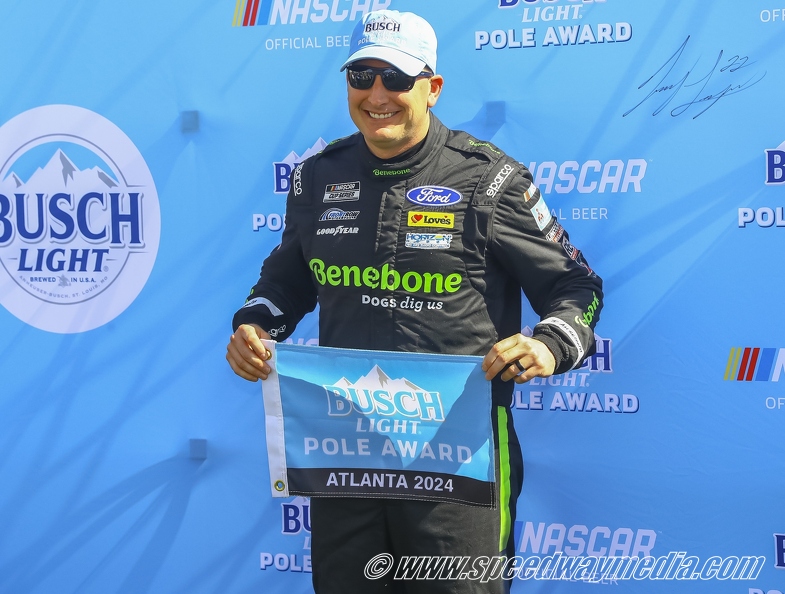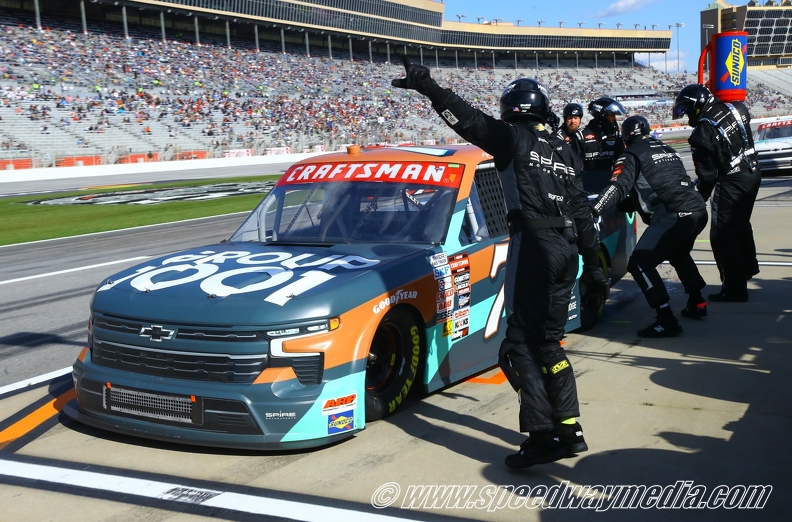Kyle Busch took his seat in the deadline room, Saturday, at Atlanta Motor Speedway. Never one to mince words, gave his thoughts on the stretch of fuel-saving during the first stage of the Daytona 500.
“I believe it’s a problem,” he said.
After a multi-car wreck in the opening laps, while some drivers followed the typical green flag pit cycle pattern of restrictor plate racing, most of the field dropped their speed to save roughly 20+ laps of fuel. At one point, AJ Allmendinger (a lap down) ran faster laps by himself than the field ran, together.
“I felt disgraceful, myself, being a race car driver – wanting to go fast, lead laps and win the Daytona 500, and that was our strategy that we had to employ at the start of the race because everybody was doing it,” he said.
Now I say this with the utmost respect to Busch and the many fans who called into SiriusXM NASCAR Radio, this week, to share that sentiment.
Y’all overblew it.
Who would make it to the end of the stage on fuel? Could they make it to the end? That fuel-saving added a layer of strategy and intrigue to plate racing and demonstrated how skilled these drivers are. Rather than a wreck-fest embarrassment, like the NASCAR Craftsman Truck Series displayed at Daytona, Phoenix and…well, really, most weekends now.
As a sports league, NASCAR sacrificed so much strategy and sport for entertainment value since in the last 10 years (after a decade of maintaining some semblance of both). It made the already controversial playoffs into a total game of chance and instituted arbitrary cautions that slow the pace of races and incentivize overly-chaotic restarts. What’s more, NASCAR all but made fuel-mileage races extinct.
NASCAR gave us a reprieve, last season, with no stage cautions for road courses. At Circuit of the Americas, William Byron and Tyler Reddick gave us some actual “quintessential NASCAR,” thanks to teams running varying pit strategies. In fact, the pit strategy was the only interesting thing to watch for most of the road course races.
Don’t point the finger at the artificial cautions that are nakedly meant to spice up the race (FOX and NBC don’t even hide it). Blame the terrible aero package NASCAR ran on road courses.
But enough of you complained, that NASCAR reversed course on it.
Say what you will about Formula 1 (and it gets bad), there’s still strategy at hand. With when you pit and what Pirelli tires you run. Yeah, most weeks, the same driver nails it better than the rest (welcome to Formula 1), but when it hits, IT HITS!
If you think you can’t do both strategy and entertainment, look at the NTT IndyCar Series. Tire strategy makes or breaks a driver’s day, most weeks. Scott Dixon ran a longer stint on tires to win at Gateway, last August.
Notice how neither F1 nor IndyCar (overly) sacrificed strategy and integrity for entertainment value.
That’s my view, for what it’s worth.







